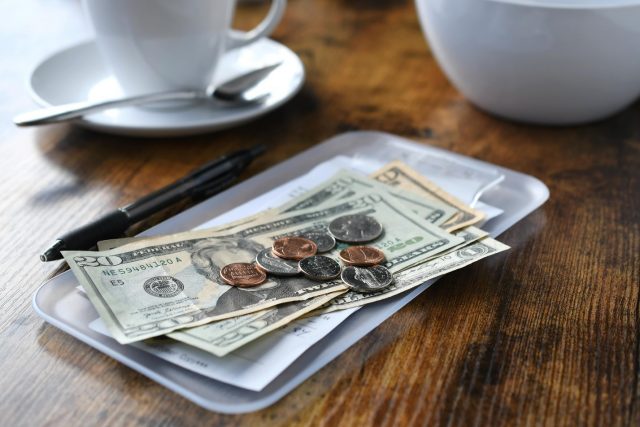Owning a bar or restaurant can be an exhilarating and rewarding venture. However, the fluctuating market dynamics, tight profit margins, and unique operational challenges call for robust financial management. Jay Krymis, an experienced entrepreneur and restaurateur, explains that in order to ensure profitability and long-term success, there are several fundamental financial practices that every bar and restaurant owner should implement.
Establish a Realistic Budget
Creating a realistic budget is the cornerstone of financial management for any business, especially in the hospitality industry. Jay Krymis explains that a well-constructed budget serves as a roadmap, guiding daily decisions and strategic planning. Begin by categorizing your expenses into fixed and variable costs. Fixed costs remain constant regardless of sales volume, such as rent, salaries, and loan payments. Variable costs fluctuate with business activity, including food supplies, utility costs, and hourly wages.
Once you have a clear understanding of your expenses, forecast your revenue based on past trends, market research, and seasonal fluctuations. Jay Krymis explains that this will help you set realistic sales targets and adjust your operational strategy accordingly. Remember, a budget is not set in stone; it requires regular reviews and adjustments to reflect the actual financial performance and changing business conditions.
Monitor Cash Flow Closely
Cash flow—the amount of cash coming in and going out of your business—determines your ability to cover expenses and invest in growth opportunities. Effective cash flow management involves monitoring your cash position daily and forecasting future cash flows regularly. Jay Krymis explains that this enables you to anticipate potential shortfalls and take corrective actions in advance, such as adjusting inventory purchases or delaying non-essential expenses.
Implementing a robust point-of-sale (POS) system can greatly enhance your ability to track sales, payment types, and customer preferences, providing real-time data to inform your cash flow management. Additionally, maintain a cash reserve to buffer against unexpected downturns or emergencies, ensuring that your business can operate smoothly during tough times.
Leverage Technology for Inventory Management
Inventory management can significantly impact your cash flow and profitability. Overstocking leads to increased costs and potential wastage, while understocking can result in lost sales and dissatisfied customers. Use inventory management software to track stock levels, sales patterns, and supplier lead times. Jay Krymis explains that this technology can help you optimize your inventory turnover rates, reducing waste and ensuring that popular items are always in stock.
Regularly review your menu and sales data to identify the most and least profitable items. Consider adjusting your menu to focus on high-margin dishes and beverages that align with customer preferences. This not only maximizes your profits but also enhances the customer experience by offering what they prefer most.
Negotiate with Suppliers for Better Rates
Building strong relationships with your suppliers can lead to better pricing, favorable payment terms, and access to higher-quality ingredients. Review your supplier agreements regularly and negotiate to improve terms. Bulk purchasing, for example, can often secure discounts, but ensure it does not lead to excessive inventory that could increase waste.
Consider joining a buying group or cooperative with other local restaurants. Jay Krymis explains that this can increase your purchasing power and lead to better negotiation leverage with suppliers, significantly reducing your cost of goods sold.
Implement Strategic Pricing
Pricing is a critical element that directly affects your revenue. Setting the right prices involves understanding your customers, monitoring competitors, and knowing your costs. Use a recipe costing card to calculate the exact cost of each menu item. This ensures that your prices cover costs and desired profit margins while remaining competitive and appealing to customers.
Dynamic pricing strategies, such as offering happy hour specials or mid-week discounts, can attract more customers during typically slow periods. Additionally, periodically review your pricing strategy to adapt to changes in supply costs, customer demand, and the overall economic environment.
Maximize Tax Benefits
Understanding and taking full advantage of available tax deductions can significantly reduce your tax burden. Expenses such as business-related travel, employee training, and certain renovations may be tax-deductible. Work with a tax professional who specializes in the restaurant industry to ensure you are compliant with tax regulations and maximizing your deductions.
Regular Financial Reviews
Schedule regular financial reviews to assess the health of your business. This includes analyzing profit and loss statements, balance sheets, and cash flow statements. Look for trends such as increasing costs or declining sales, and address these issues promptly. Regular financial analysis helps you make informed decisions and pivot strategies when necessary.
Effective financial management is crucial for the success of any bar or restaurant. Jay Krymis emphasizes that by establishing a realistic budget, monitoring cash flow, leveraging technology for inventory management, negotiating with suppliers, implementing strategic pricing, maximizing tax benefits, and conducting regular financial reviews, you can enhance your profitability and ensure the sustainability of your business. In the competitive world of hospitality, these practices are not just recommendations—they are essentials for thriving in a challenging industry.








